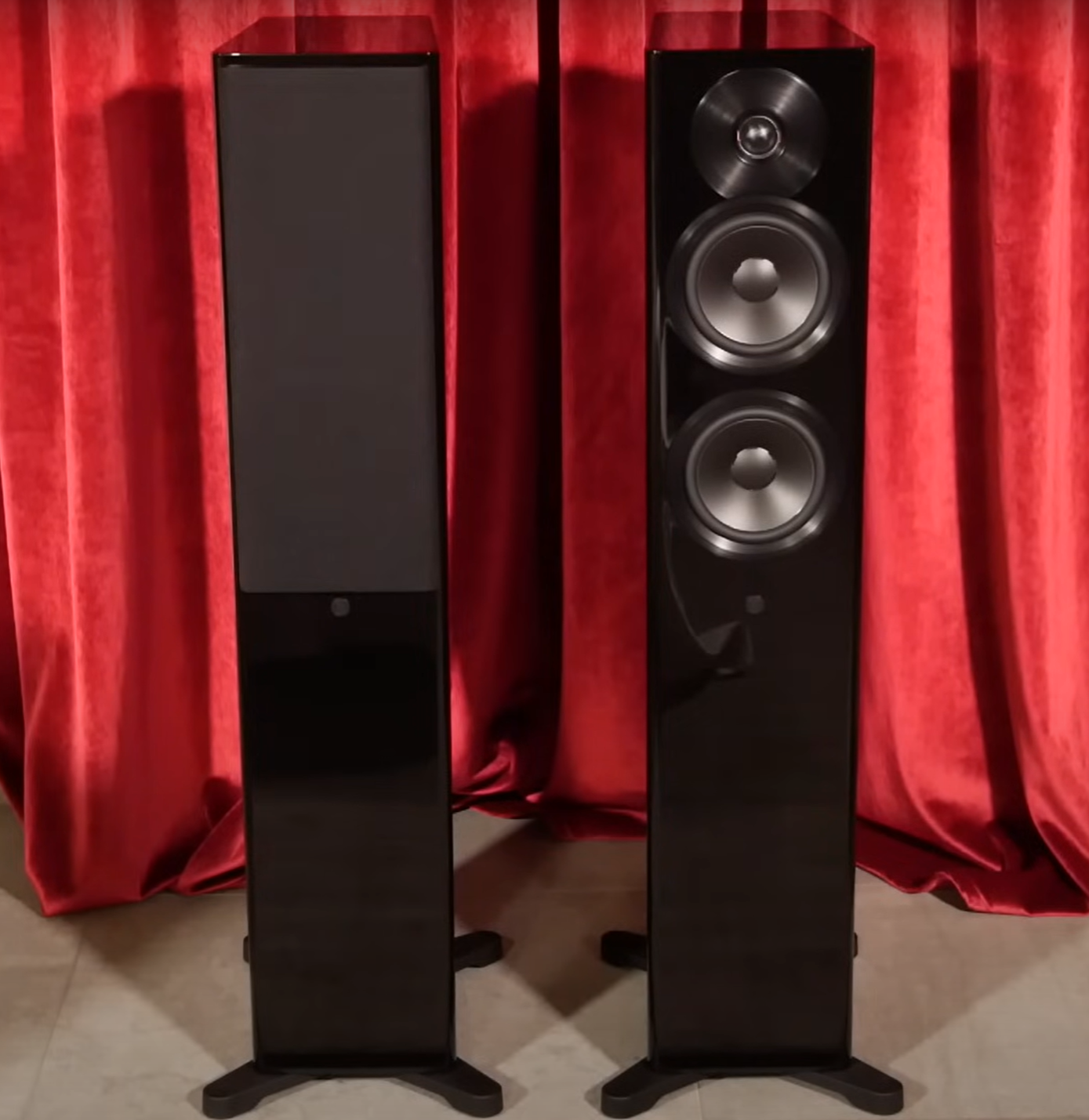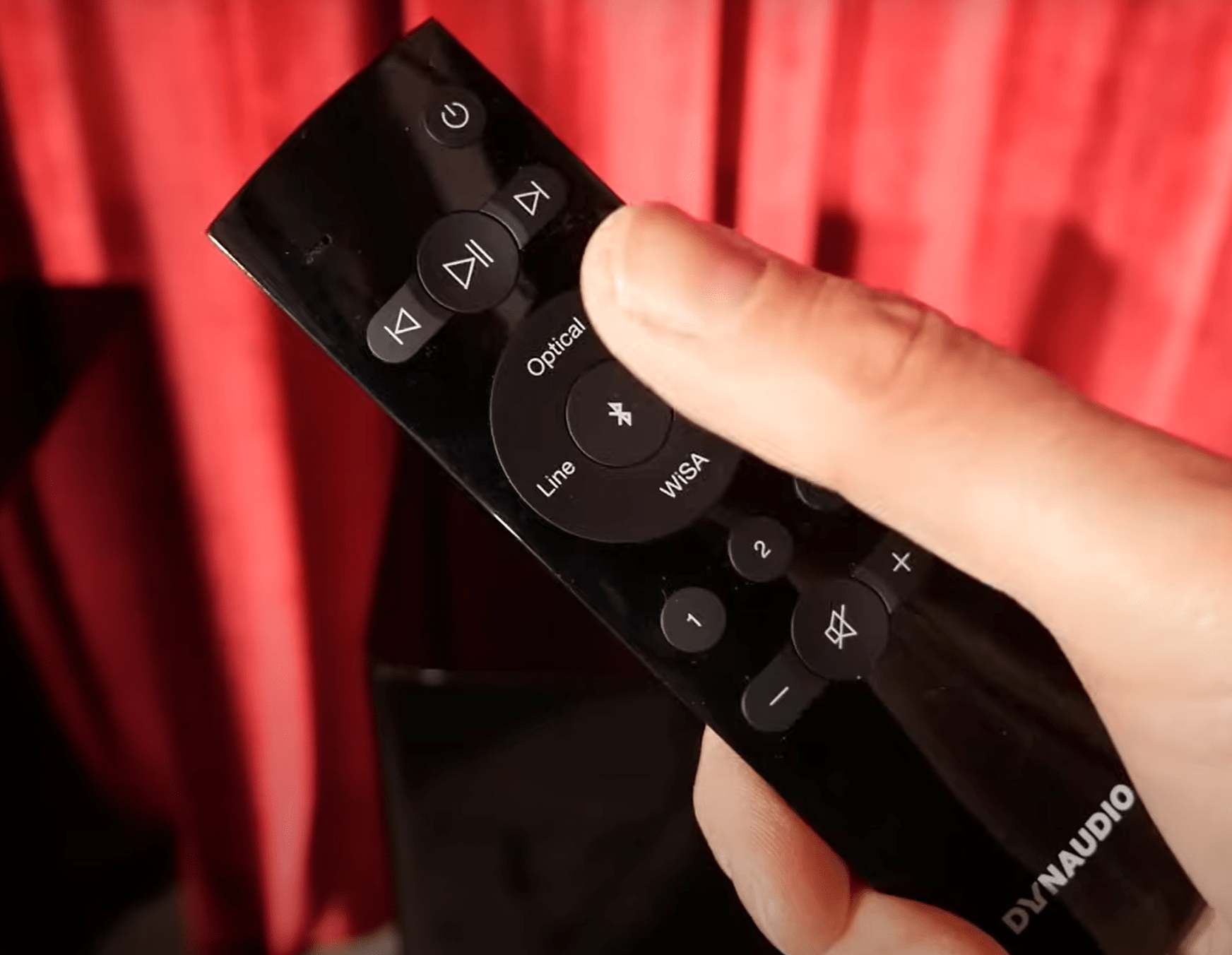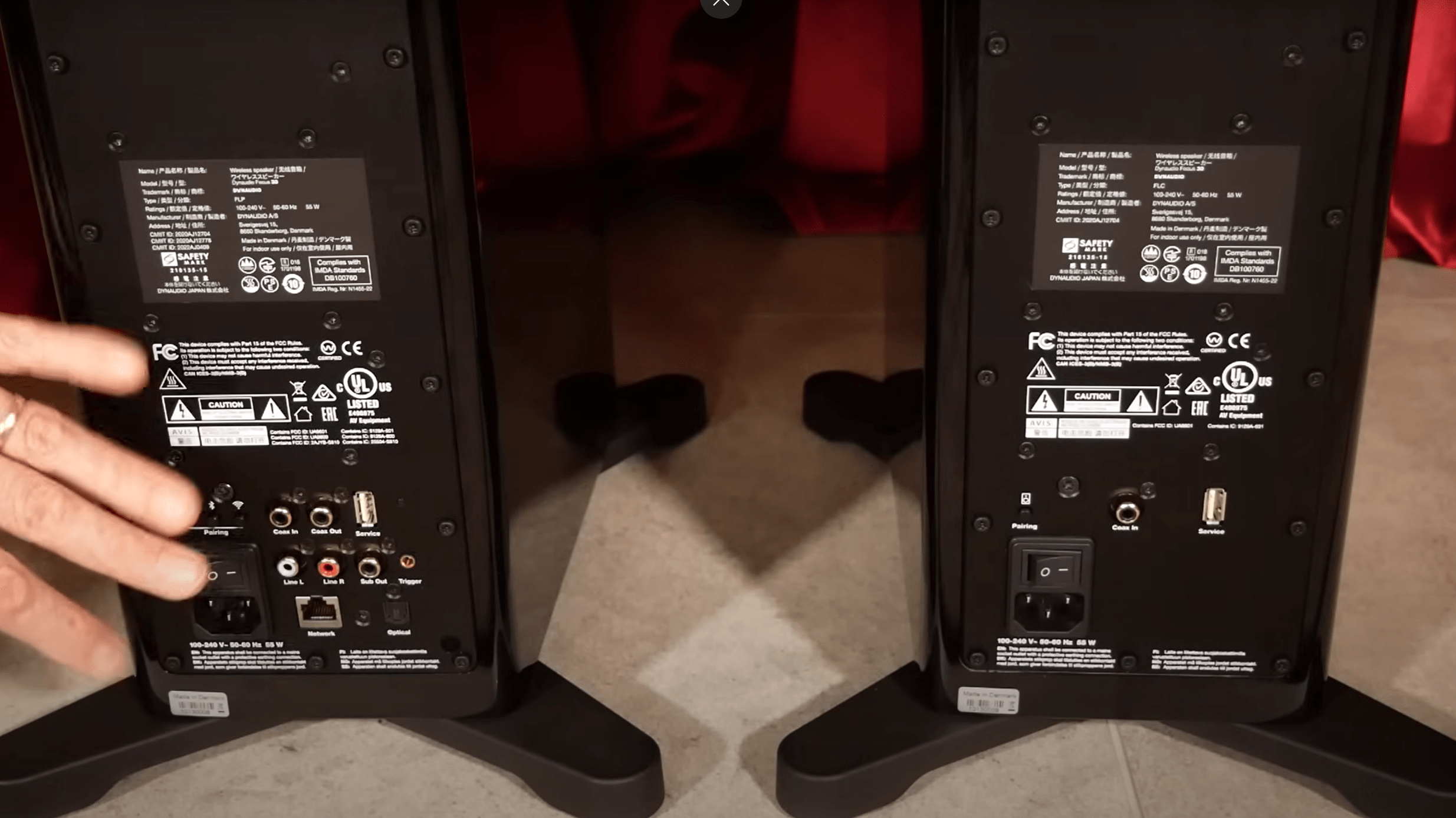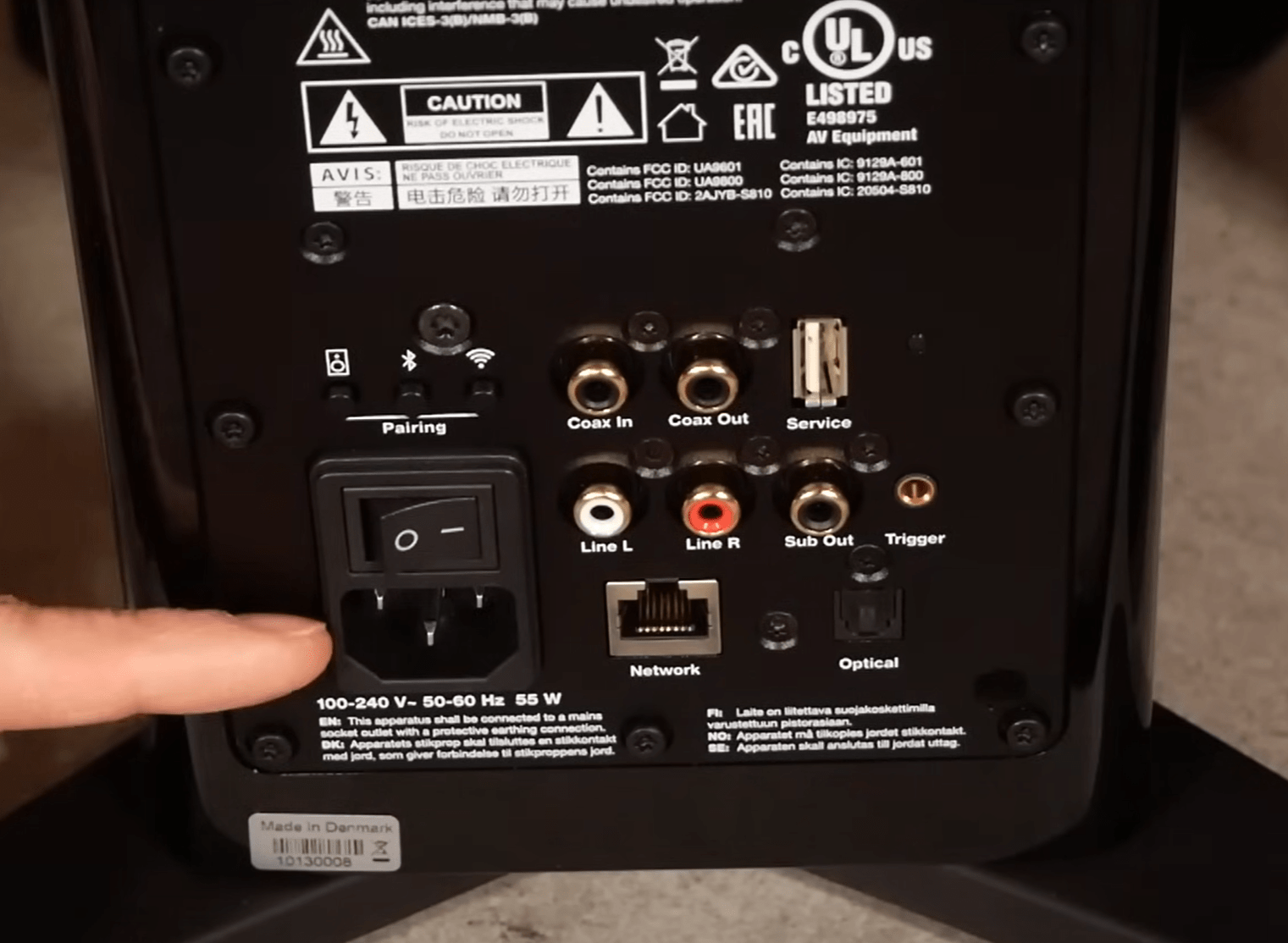Dynaudio Focus 30 Review
After testing the active bookshelf speakers Focus 10, we now turn to the next larger model in the new Dynaudio series, the Focus 30 floor-standing speakers. These uncompromising active speakers go all out, equipping each driver with its own amplifier. Tested at 7500 Euros (pair).
by Simon Mendel

The Danish manufacturer Dynaudio was founded in 1977 and is known for its proprietary magnesium-silicate-polymer diaphragms. Since then, Dynaudio has made a name for itself in various fields, from home audio to recording studios to car audio systems, standing for high-quality sound.
As mentioned earlier, the Dynaudio Focus 10 has just been showcased to a broad audience at HIGH END 2022. In our in-house test lab, the active bookshelf speakers impressed our colleagues with their detail and dynamic performance, earning a well-deserved 91% rating. With such high standards, we eagerly anticipated how the larger Dynaudio Focus 30 would perform. But first, let’s look at the speakers closer before diving into the sound test.
Mirroring DALI’s approach with Rubicon 6, Dynaudio’s focus 30 is essentially an “activated” Evoke 30
Build and Design
The Focus 30 measures 90 cm high, 18 cm wide, and about 26 cm deep, making it a compact floor-standing speaker. To ensure stability, four feet must be manually attached, extending the base by about 20 cm. For better isolation from the floor, the supplied spikes can be mounted on the feet. Attaching the feet is straightforward, involving just eight screws per speaker.
The Dynaudio Focus 30 has a built-in Class-D amplifier for each of its three drivers from Pascal in Copenhagen. The 14 cm midrange driver and the equally sized woofer are each powered by 280W, while the tweeter receives 110W. The tweeter is a Cerotar fabric dome tweeter with the Hexis mechanism to suppress unwanted resonances and smooth the frequency response.

The woofer is based on the Esotar 3 model used in Dynaudio’s Confidence series, featuring a ceramic magnet system made from strontium carbonate and ferrite for optimized airflow and higher sensitivity. The midrange and woofers are Esotec+ drivers made of magnesium-silicate-polymer, known for their ideal combination of lightness, stiffness, and damping. A lightweight aluminum voice coil enhances detail, and the improved magnet system allows for greater excursion.
The Focus 30’s cabinet is sealed, without a bass reflex port, which should allow for better reinforcement. The crossover is entirely digital via a DSP, giving the active speaker a full frequency response of 20Hz to 34kHz with a tolerance of -6 dB.
Connectivity

The Focus 30 has a primary and a secondary speaker. The primary one has the connection and control terminal. On its back, there are three pairing buttons for connecting to the secondary speaker and the source device via Wi-Fi and Bluetooth. Input-wise, the Dynaudio Focus 30 has an analog RCA pair, a network interface, a USB-A input for service, and optical and coaxial digital inputs. Outputs include a sub out, an RCA for connecting to the secondary speaker, and a trigger.
The Focus 30 shines in wireless use, supporting Spotify Connect, Tidal Connect, AirPlay 2, Chromecast, and Roon. It is also WiSA-compatible, enabling wireless home theater setups. For this test, we focus on stereo use. To get the best performance, the Focus 30 is compatible with the Dirac Live automatic room correction software, which we won’t miss trying!

Before using Dirac, we need to set up the speakers. Once powered on, the speakers should automatically connect within seconds. This worked flawlessly in our test. Now, you can connect peripherals or stream directly to the Focus 30.
Dirac
Few speakers are “Dirac Live-ready,” but the Focus series from Dynaudio is. To use Dirac Live, you need a measurement microphone and a license, which costs $349 for stereo and $499 for multichannel systems up to 9.1.6. Dirac recommends the UMIK-1 microphone from MiniDSP, available for $79. Any other microphone can be used if you have its calibration profile, ensuring precise room measurement for optimal results.

Setting up Dirac is similar to other room correction systems. First, the microphone is calibrated, and the desired size of the sweet spot is set. For a near-studio result, choose a narrow sweet spot. For home theater or living room use, a wider sweet spot is better. Measure various points around the listening position. After some experimenting, the software generates a custom filter curve, which is saved to the Focus 30 with a click. Up to five different profile curves can be stored, more than enough for most applications. The filter curve can be adjusted to taste, like boosting the highs. The “Dynaudio Set-Up and Control” app allows switching the filter on or off and adjusting other settings. The app is well-designed and easy to use without requiring registration.

Sound Quality
With the speakers set up and the room measured, we’re ready for the sound test. We first disable the Dirac Live adjustment. We connect via smartphone and Tidal Hifi Plus to the Focus 30, playing various HiRes and Master quality tracks. For instance, “Miss Modular” by the Anglo-French avant-pop band Stereolab from the 1997 album “Dots And Loops” sounds lively and crisp through the Focus 30. Each element dances in the room, with impressive liveliness. The detail, already evident with the smaller Focus 10, is even more defined with the Focus 30. The dynamic performance is highly nuanced and sensitive.
Next, we select our custom Dirac curve and replay the song. The room correction results are impressive. The overall sound is clearer, the stereo image tidier, and the frequency response flatter. The improvement is most noticeable in the bass, which is more controlled, enhancing the localization of all elements. The depth of instruments and signals is more present, creating a spacious soundstage. The playful nature of the Stereolab song is even more pronounced, with every tiny detail distinctly audible.

However, Dirac adjustment slightly reduces volume levels as some frequencies are attenuated. This isn’t an issue, as the Focus 30 handles high volumes well, maintaining composure and balance thanks to Dirac Live.
Without room correction, the bass is fuller. The sub-bass can sometimes be too strong for music listening, though it remains precise and clean, likely due to the sealed design. For multimedia use, a subwoofer might not be necessary with the Focus 30’s powerful bass. The mids and highs are outstanding, with detailed, sharp highs and clean, dynamic mids for excellent speech intelligibility. Those who prefer a punchy sound and a smiley face EQ curve will enjoy the Focus 30 without Dirac Live, as it defies the cold Nordic stereotype. The bass is rich, and the highs are sparkling.
With Dirac Live, the Focus 30’s sound is highly customizable and smooth if desired. The Focus 30 excels in various settings, whether as a stereo music system or part of a multichannel home theater, thanks to its modern technologies and compatibility for any audiophile application.
SPECIFICATIONS
General
- Device Type: Floor-standing speaker
- Price Category: Upper class
- Manufacturer: Dynaudio
- Model: Focus 30
- Price (RRP): 7500 Euros (pair)
- Dimensions (W/H/D): 26.8 x 94.7 x 34.2 cm
- Weight: 16.2 kg
- Information: https://dynaudio.com/
Technical Data (According to Manufacturer)
- Operation: Active
- Design: 3-way box
- Frequency Response: 33Hz-23kHz
- Power: 2 x 280W, 110W
- Connection to Source: Cable, Wi-Fi, BT
- Power Consumption:
- Operation: max. 280W
- Stand-by: <0.5W
- Room Recommendation: From 20 m² to 42 m²
- Individual Sound Adjustment: Yes
- Inputs: 2 x RCA, 1 x optical, 1 x coaxial, wireless, BT
RATINGS
- Bass Reproduction: 19/20
- Midrange Reproduction: 19/20
- Treble Reproduction: 19/20
- Spatial Reproduction: 9/10
- Sound Quality: 66/70
- Features/Build Quality: 9/10
- User-Friendliness: 9/10
- Adjustments: None
- Intermediate Score: 85 out of 90 points
- Price/Performance: 8/10
- Final Score: Excellent 93%
Competitors
- KEF LS60 Wireless
- Strengths: Wireless streaming, Uni-Q driver array for detailed imaging, powerful integrated amplifiers.
- Design: Sleek, modern design with a variety of finishes.
- Bowers & Wilkins Formation Duo
- Strengths: High-resolution streaming, Carbon Dome tweeters for clarity, powerful built-in amplifiers.
- Design: Elegant and modern with premium build quality.
- Devialet Phantom I
- Strengths: Extraordinary bass performance, sleek design, wireless capabilities.
- Design: Futuristic and compact, available in multiple finishes.
Verdict

Dynaudio’s Focus 30 is a true active speaker, with an amp for each driver. It excels in streaming and is compatible with Dirac Live room correction software. It delivers detailed sound and sensitive dynamics. So, what are you waiting for?
- Dirac Live compatible
- WiSA compatible
- An amp per driver






